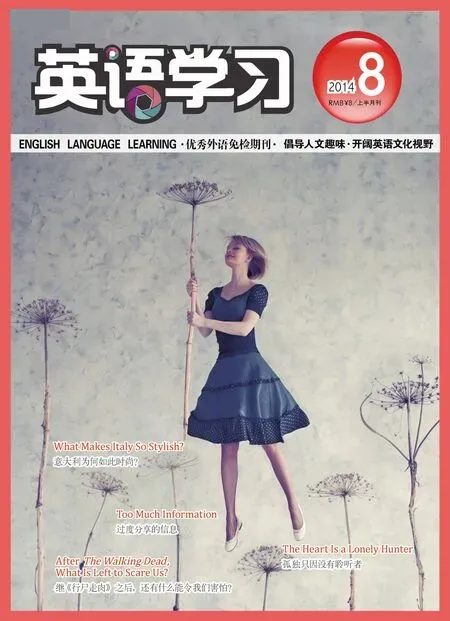《牛津英语词典》里的中文词汇──干杯、旗袍
∷曾泰元
《牛津英语词典》(The Oxford English Dictionary)依历史原则编纂,是英语世界最大、最权威的英语词典。自2010年底整合资源,更新条目、定义与书证后,以在线版的形态重新问世。在线版的《牛津英语词典》收录了300个左右源自中文的词汇,或音译(loanword)或借译(loan translation)。
从2013年第8期开始,作者每期介绍两条,照登《牛津英语词典》的定义并加以翻译,解释其词源,挑选精当的书证,以英汉双语的方式呈现。
ganbei干杯;干了
【词源】[ < Chinesegānbēi: gānempty, dry +bēicup ] 源自中文“干杯”
【定义】n. A Chinese drinking-toast, a call to drain one’s glass. Also asv. intr. andtrans., to drink (as) a toast. 中国式的祝酒,要人喝干杯中酒所说的话。亦作不及物动词和及物动词
【书证】
One of the cordial customs in China is to ganbei a Maotai—to down in one dash a glass of the country’s famous
colourless wheat-based liquor. 在中国,一个表示友好的习俗是把茅台给干了──也就是一口气喝下一杯中国知名的、以小麦为原料的白酒。──澳大利亚《信使报》(Courier-Mail),1976/7/7
Many ganbei, or toasts, drunk with mao-tai whisky,
cloyingly sweet orange soda or cool, refreshing Chinese beer were raised. 很多人举杯喊“干了”(即祝酒),喝的是类似威士忌的茅台、甜的发腻的橙子汽水、还有清凉爽口的中国啤酒。──《时代杂志》(Time),1987/4/13
qipao旗袍
【词源】[ < Chineseqípáo(Wade-Giles transcriptionch’ip’ao), lit. ‘banner dress’ The dress was so called with reference to the Manchu people who ruled China during the Qing dynasty: they were organized into groups designated by different coloured banners,and consequently the termqírén‘bannermen’became a way to refer to Manchus. The one-piece garment was characteristic of Manchu dress, as distinct from the two-piece styles used by Han Chinese women. 这种妇女服饰得名自清朝统治中国的满族。满族人民依不同颜色的旗帜而分类编制,因此“旗人”这个说法便用来指称满族。这种连身的衣服是满族妇女的特色服饰,有别于汉族妇女所穿的两截式风格。 【定义】n. A type of dress traditionally worn by Chinese women, typically having a high mandarin collar, a split skirt, and a fitted bodice with an asymmetrical closure extending from the neck to the right underarm; = cheongsam一种中国妇女所穿的传统连衣裙,一般为直领,裙摆开衩,腰部以上合身,开襟不对称,由领口开到右侧腋下。亦作cheongsam 【书证】 When she struts about the stage.., her tight- fitting Chinese ‘qipao’, slit to the hip, flares open to reveal slender legs. 她在台上昂首阔步,身上穿着开衩至臀部的紧身旗袍,展露出修长的双腿。──《纽约时报》(The New York Times),1984/1/30 During a break, Madam Fu changes quickly into a navy blue qipao tastefully complemented with a peach apron. 休息时,傅夫人立即换上一件深蓝色的旗袍,搭配一条桃色的围裙,雅致而有品位。──新加坡《海峡时报》(The Strait Times),1992/10/20

